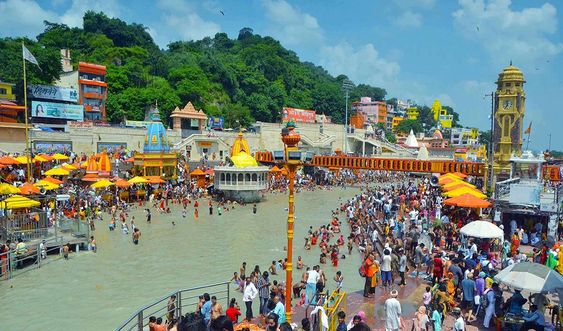Mahalaya Amavasya
Mahalaya Amavasya is a significant Hindu observance that marks the beginning of the Pitru Paksha, the fortnight dedicated to honoring one’s ancestors or pitrus. It falls on the New Moon day (Amavasya) in the lunar month of Bhadrapada, which typically corresponds to September in the Gregorian calendar. Mahalaya Amavasya holds immense cultural and spiritual importance in many regions of India, especially in Bengal.
Significance of Mahalaya Amavasya:
- Pitru Paksha Commencement: Mahalaya Amavasya signals the start of the Pitru Paksha, a time when Hindus perform rituals and ceremonies to pay homage to their deceased ancestors. It is believed that the souls of the ancestors visit the earthly realm during this period, making it an opportune time to seek their blessings and offer prayers for their well-being in the afterlife.
- Tarpan and Shraaddha Preparation: Families begin preparations for the Tarpan and Shraaddha ceremonies, which are performed throughout the Pitru Paksha. This includes cleaning and sanctifying ritual spaces, gathering necessary materials, and planning for the rituals.
Rituals and Observances on Mahalaya Amavasya:
- Tarpan and Shraaddha: On Mahalaya Amavasya, families offer special Tarpan to their ancestors. They visit riverbanks, ponds, or sacred water bodies to perform this ritual. Water mixed with black sesame seeds and barley is offered, along with prayers and mantras, to satisfy the thirst of the departed souls.
- Mahalaya Mantras: Many people listen to or recite Mahalaya Mantras and verses on this day. These mantras invoke the blessings of the ancestors and are considered auspicious for spiritual progress.
- Offering Food to Ancestors: In some regions, families prepare food offerings and place them on banana leaves or plates to symbolize the presence of ancestors. These offerings are part of the Tarpan and Shraaddha rituals and are later shared with Brahmins or priests.
- Ganga Snan (Bathing in the Ganges): For those near the holy Ganges River, taking a dip or bath in the sacred river is believed to cleanse one of the sins and grant blessings from the ancestors.
- Pilgrimages: Pilgrimages to holy places and ancestral villages are common during this time, as people visit ancestral shrines and perform rituals at their ancestors’ resting places.
Historical and Cultural Context: Mahalaya Amavasya is particularly famous in West Bengal, India, where it is associated with the popular radio program “Mahishasura Mardini.” This program features a recitation of the Chandi Path, an ancient text that narrates the story of the goddess Durga’s battle against the demon Mahishasura. It is broadcast on the radio early in the morning, and millions of Bengalis tune in to listen. This tradition has a historical background and is considered a way to invoke the divine feminine energy for protection and well-being.
Mahalaya Amavasya is a crucial day in the Hindu calendar, marking the beginning of the Pitru Paksha and the time for honoring and seeking blessings from one’s ancestors. It involves rituals like Tarpan and Shraaddha, listening to Mahalaya Mantras, and connecting with one’s cultural and spiritual heritage.


